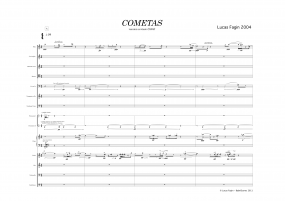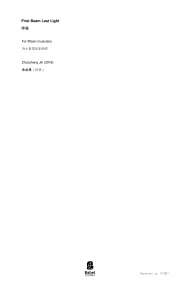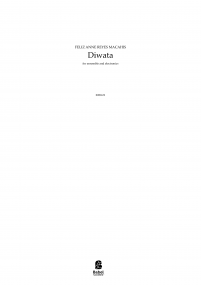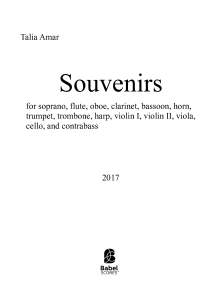Cometas
for fourteen musicians spatialized ensemble
13,39 €
Digital version (+0,00 €) instant download
Printed format (+16,20 € printing and shipping). Colissimo7-14 days aprox.
When you buy a score, you can contact the composer right here!
Specifications
Region
Europe
Estimated Duration
11 - 15min
Date
2004
ISMN : 979-0-2325-0004-1
Videos on this piece
Notes on this piece Dedicated to Guillaume Bourgogne.
This piece was the first of a series with spatialized devices. It is a piece for ensemble of 14 instruments arranged on the stage in three main curves articulated through a centre. The conductor stands on the right of the stage so that the audience have a cross view of the musicians.The approach to comets was somewhat rudimentary as I did not study them in depth. I read some theory or other about their origins, descriptions of their various types of trajectory, also about their physicochemical composition and saw some images (none that struck me as particularly interesting). But I did not need and even refused the possibility to tinge my composition process with any "scientific" type of quality. Thus I simply took in some simple concepts and then gave free rein to my imagination. However I must acknowledge that several sections of the piece were conditioned by the little information I absorbed at the very beginning. The piece has five sections. I composed the first section inspired in a theory which holds that there are regions of the universe where comets are formed and from which they are later ejected to follow their course along their different trajectories. Starting from a very personal conception, I built this space in which comets are born and gather to be later thrown out.The fourth section refers to the essential elements and parts that convey the imaginary view and noise of an advancing comet: its head, its tail, light, gas, friction, etc.The fifth section is a metaphor for a comet whose trajectory starts changing and is progressively compressed. Finally the comet escapes its trajectory jumping into a new space. The idea to compose about comets had moreover another meaning or potential concerning the experience of spatialization I was implementing, as comets are both mobile and static elements (depending on time and viewpoint). The arrangement of spatialized instruments allowed me to link ideas of sound to space. Thus there was a space imagery. Each gesture implied a movement of passage or a particular stable arrangement. From bodies of sound that were transfigured as they passed (section 2) to a large static body distributed in space in the image of a comet (section 4).
Add to a playlist
- Login to create your own lists
This piece was the first of a series with spatialized devices. It is a piece for ensemble of 14 instruments arranged on the stage in three main curves articulated through a centre. The conductor stands on the right of the stage so that the audience have a cross view of the musicians.The approach to comets was somewhat rudimentary as I did not study them in depth. I read some theory or other about their origins, descriptions of their various types of trajectory, also about their physicochemical composition and saw some images (none that struck me as particularly interesting). But I did not need and even refused the possibility to tinge my composition process with any "scientific" type of quality. Thus I simply took in some simple concepts and then gave free rein to my imagination. However I must acknowledge that several sections of the piece were conditioned by the little information I absorbed at the very beginning. The piece has five sections. I composed the first section inspired in a theory which holds that there are regions of the universe where comets are formed and from which they are later ejected to follow their course along their different trajectories. Starting from a very personal conception, I built this space in which comets are born and gather to be later thrown out.The fourth section refers to the essential elements and parts that convey the imaginary view and noise of an advancing comet: its head, its tail, light, gas, friction, etc.The fifth section is a metaphor for a comet whose trajectory starts changing and is progressively compressed. Finally the comet escapes its trajectory jumping into a new space. The idea to compose about comets had moreover another meaning or potential concerning the experience of spatialization I was implementing, as comets are both mobile and static elements (depending on time and viewpoint). The arrangement of spatialized instruments allowed me to link ideas of sound to space. Thus there was a space imagery. Each gesture implied a movement of passage or a particular stable arrangement. From bodies of sound that were transfigured as they passed (section 2) to a large static body distributed in space in the image of a comet (section 4).
Instrumentation
Flute|Oboe|Clarinet|Bassoon|Trumpet|Horn (French Horn)|Trombone|Percussions (2)|Piano|Violin|Viola |Cello|Double bass
Recording
Paris Conservatory Orchestra Guillaume Bourgogne
Score Details
Format - A3 / Tabloid
Pages - 38
Pages - 38









IIIkl] A3 z_285x285.png)